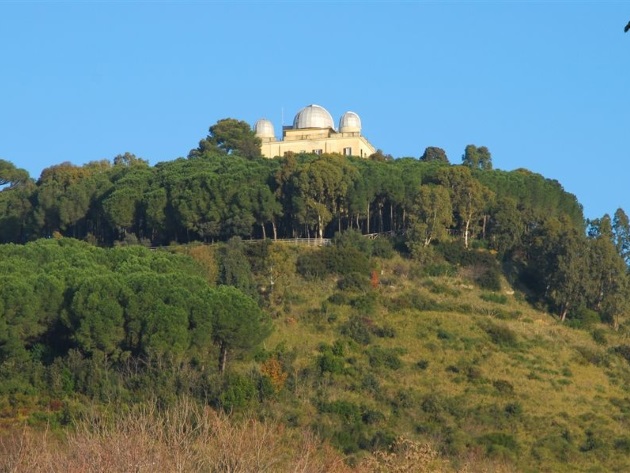
The Monte Mario Nature Reserve extends in the north-western part of Rome and takes its name from the highest cliff (139 metres) of the Farnesina hills, which dominate the Tiber valley.
Geologically speaking, the area consists of sand and gravel, from which numerous fossil remains originate. Inhabited since prehistoric times, in the Roman age, Monte Mario housed numerous residential villas.
Used in the Middle Ages to plant vineyards and vegetable gardens, from the Renaissance on, the noble families chose the hill as place of residence due to its dominant position over the city.
One of the most distinguished examples of Renaissance villas is Villa Madama. In the park area are other historic mansions. Among them are Villa Mazzanti and Villa Mellini, home to the famous Astronomical Observatory.
Villa Mellini
Together with Villa Sciarra, it is one of the few 15th-century villas in Rome. It seems that Monte Mario, called Montemalo in the Middle Ages, owes its current name to Mario Mellini, a powerful lord of the time and member of one of the most influential families in Rome at the time. The villa was built on the initiative of Mario Mellini, who constructed his residence there. Thanks to its exceptional location, the quietness, and the healthiness of the area, the villa has been appreciated by popes and famous people throughout the ages.
Less pleasant guests, such as the Lansquenets, visited Villa Mellini when they sacked Rome in the 16th century. Also the French troops set up their headquarters there after suppressing the uprisings of the Roman Republic in 1849. The current building of the villa is essentially the result of a 19th-century renovation, which has left little or nothing of the Renaissance construction. It houses the Astronomical and Meteorological Observatory, over which the meridian of Rome passes, and the Astronomical and Copernican Museums.
Villa Mazzanti
The access is unusual: to reach it, one has to climb a series of ramps or a small road that both start from Via Gomenizza and climb up through the shady green of the holm oaks. The avenue ends at a Belvedere that offers a suggestive view of Rome and the Dome of St Peter's.
The villa's Historical Garden is an actual panoramic park and includes several fountains with water features and an artificial pond, bordered by laurels and rockeries, in the centre of which, on an island of cliffs, stands a rustic brick hut.
In an incredibly stunning location is the Casino of Villa Mazzanti, built at the end of the 19th century; it is surrounded by rustic walls and fountains. On the top floor is a beautiful loggia, painted in imitation of a flowering pergola, from which there is a splendid view of the city. The structure now houses the headquarters of RomaNatura, the management body for the protected natural areas of Roma Capitale.
The park is home to numerous plant species, forming a unique ensemble in Rome. These range from the Mediterranean woodland with holm oaks and cork oaks to the mixed forest with hornbeams, maples, hazels, lindens, and dogwoods, while in the wetter areas, there are white poplars. Animals include rodents, such as the hazel dormouse and the wild mouse, and various bird species, such as the kite, grey heron, peregrine falcon, hoopoe, and kestrel. The area is also known as a deposit of marine fossils, some of which you can observe in the palaeontological museums scattered around the world.
Informationen
Open from dawn to dusk
 Condividi
Condividi
Location
Um mehr über alle barrierefreien Dienste zu erfahren, besuchen Sie den Abschnitt barrierefreies Rom.











































